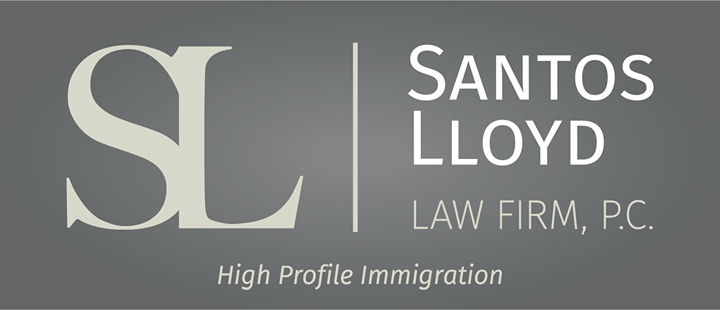O-1 approuvé ! Votre feuille de route pour obtenir une carte verte EB-1A
Shirin Navabi • March 13, 2025
Click here to read this article in English
Si vous venez d'apprendre que votre visa O-1 a été approuvé, félicitations ! Le visa O-1 est un visa prestigieux, accordé uniquement aux personnes qui peuvent démontrer des capacités extraordinaires dans leur domaine - qu'il s'agisse du visa O-1A : personnes ayant des capacités extraordinaires dans le domaine des sciences, de l'éducation, des affaires ou du sport, ou du visa O-1B : personnes ayant des capacités extraordinaires dans le domaine des arts ou des réalisations extraordinaires dans l'industrie du cinéma ou de la télévision. Obtenir l'approbation O-1 n'est pas une mince affaire, et c'est une véritable validation de votre talent et de votre travail acharné.
Mais pour de nombreux détenteurs de visas O-1, cette approbation soulève une autre grande question : quel est le chemin à suivre pour obtenir une carte verte ? Pour ceux qui souhaitent rester aux États-Unis de manière permanente, le visa EB-1A est souvent la prochaine étape naturelle. Il est également connu sous le nom de carte verte pour les personnes ayant des capacités extraordinaires, ce qui en fait un proche cousin du visa O-1.
L'obtention de la résidence permanente aux États-Unis par le biais de l'EB-1A implique deux étapes : 1) l'approbation de la demande d'immigration EB-1A (formulaire 1-40) et 2) l'ajustement du statut à celui de résident permanent ou la demande de traitement consulaire.
Toutefois, si ces deux catégories présentent des similitudes, elles ne sont pas identiques. La norme EB-1A est nettement plus stricte et de nombreux titulaires d'un permis O-1 sous-estiment le nombre de preuves qu'ils doivent présenter pour obtenir la résidence permanente. La bonne nouvelle, c'est que si vous êtes proactif et stratégique dans la constitution de votre dossier, vous pouvez améliorer considérablement vos chances de réussite.
Comprendre la différence entre O-1 et EB-1A
Les visas O-1 et EB-1A s'adressent tous deux aux personnes ayant des capacités extraordinaires, mais ils ont des objectifs différents. Le visa O-1 est un visa de travail temporaire qui vous permet de venir aux États-Unis pour travailler sur des projets spécifiques ou pour un employeur particulier. Il exige qu'un sponsor américain dépose la demande en votre nom.
Le visa EB-1A, en revanche, est un visa d'immigrant - c'est la première étape vers l'obtention de la résidence permanente. Étant donné que le EB-1A mène à la résidence permanente, ses critères d'admissibilité sont encore plus élevés. Vous devez non seulement faire preuve de capacités extraordinaires, mais aussi montrer que votre reconnaissance est durable et que votre travail a eu un impact durable sur votre domaine.
Que pouvez-vous réutiliser de votre dossier O-1 ?
Si votre demande O-1 est solide, certains des éléments de preuve que vous avez soumis seront toujours valables pour l'EB-1A. Il s'agit notamment de vos récompenses, de votre couverture médiatique, de vos lettres d'experts et de la preuve de votre appartenance à des organisations prestigieuses. Mais l'EB-1A exige davantage : vous devez aller au-delà de ce que vous avez accompli et prouver que votre influence est permanente, qu'elle a un impact et qu'elle est reconnue au niveau national ou international.
Comment renforcer votre dossier pendant votre séjour en O-1
L'une des mesures les plus intelligentes que vous puissiez prendre est de mettre à profit le temps passé sous le visa O-1 pour renforcer activement votre profil EB-1A. Cela signifie que vous devez rechercher des occasions de faire figurer votre travail dans des médias de premier plan, de publier des contributions plus originales, de juger des concours et de jouer un rôle de premier plan dans votre communauté professionnelle. Chaque action que vous entreprenez pour améliorer votre visibilité et votre influence
Dernières réflexions - Le passage de O-1 à EB-1A est possible
Vous ne pourrez peut-être pas déposer votre demande EB-1A aujourd'hui, mais nous pouvons vous aider à constituer votre dossier étape par étape. Que vous ayez besoin de conseils pour renforcer votre profil, identifier les bonnes preuves ou préparer un plan de dépôt stratégique, notre équipe est là pour vous aider.
Si vous êtes actuellement titulaire d'un visa O-1 et que vous pensez pouvoir prétendre à un visa EB-1A à l'avenir, nous vous encourageons à contacter notre cabinet. Nos avocats expérimentés ont aidé d'innombrables personnes à naviguer avec succès sur cette voie, et nous serions heureux d'examiner votre cas et de créer une feuille de route personnalisée pour votre parcours vers la carte verte.
Ce blog n'est pas destiné à fournir des conseils juridiques et rien ici ne doit être interprété comme établissant une relation avocat-client. Veuillez prendre rendez-vous avec un avocat spécialisé en droit de l'immigration avant d'agir sur la base de toute information lue ici.

Once you have connected with a college program, have been admitted to the school, and deemed eligible to compete athletically, you will need to secure an F-1 student visa in order to actually attend your new college and begin your time as a student athlete. The first step in the visa process is to receive your Form I-2

For many talented athletes around the world, U.S. college athletics represent a remarkable opportunity to combine elite athletic competition with higher education. In sports such as basketball, soccer, track and field, and tennis, among others, hundreds of colleges and universities across the United States offer struct

Under the new regulation, if a person filed or files Form I-589, Application for Asylum and for Withholding of Removal after October 1, 2024, and the application remains pending with USCIS for 365 days, the applicant must pay an Annual Asylum Fee (AAF) on the one-year anniversary of his or her filing date.



